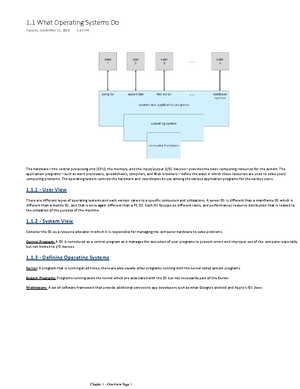- Information
- AI Chat
Was this document helpful?
1. FCFS Scheduling
Course: Operating Systems Principles (CSCI 340)
16 Documents
Students shared 16 documents in this course
University: Queens College CUNY
Was this document helpful?

asifroni673@gmail.com
(FCFS) First Come First Serve ~ Non-Preemptive ~ CPU Scheduling Algorithm
Let
Pi
be = Process
i
where (
i
= 0,
1, 2, 3, …)
AT
be = Arrival Time
BT
be = Burst Time
CT
be = Completion Time
TAT
be = Turnaround Time
WT
be = Waiting Time
Starting Time is always zero to find
CT
.
Draw Gantt Chart.
Calculate
CT
,
TAT
,
WT
.
P
AT
BT
CT
TAT
WT
P0
0 5 ? ? ?
P1
1 3 ? ? ?
P2
2 8 ? ? ?
P3
3 6 ? ? ?
Drawing Gantt Chart:
Step 0: Start with an empty Gantt Chart.
t=0 12 3 4 5 6 7 8 9 10 11 1213 14 15 16 17 18 19 2021 22
P0
P1
P2
P3
Step 1: When
t=0
,
P0
arrives and is the only process available. Since this algorithm
is non-preemptive, this process will not be paused and will entirely execute.
t=0 12 3 4 5 6 7 8 9 10 11 1213 14 15 16 17 18 19 2021 22
P0
0
P1
P2
P3










